Intermittency Reinjection in the Logistic Map
Abstract
1. Introduction
2. The Logistic Map
3. Intermittency in the Logistic Map: Reinjection Processes
3.1. Fixed Point : Non-Uniform RPD Function
3.2. Fixed Point
3.2.1. Sub-Interval
3.2.2. Sub-Interval
3.2.3. Sub-Interval
4. Conclusions
Author Contributions
Funding
Institutional Review Board Statement
Informed Consent Statement
Data Availability Statement
Acknowledgments
Conflicts of Interest
Abbreviations
| RPD | Reinjection probability density function |
| LBR | Lower boundary of reinjection |
Appendix A. The Reinjection Probability Density Function
Appendix B. M Function Methodology
References
- Schuster, H.; Just, W. Deterministic Chaos; Wiley VCH: Mörlenbach, Germany, 2005. [Google Scholar]
- Nayfeh, A.; Balachandran, B. Applied Nonlinear Dynamics; Wiley: New York, NY, USA, 1995. [Google Scholar]
- Elaskar, S.; del Rio, E. New Advances on Chaotic Intermittency and Its Applications; Springer: Cham, Switzerland, 2017. [Google Scholar]
- Dubois, M.; Rubio, M.; Berge, P. Experimental evidence of intermittencies associated with a subharmonic bifurcation. Phys. Rev. Lett. 1983, 16, 1446–1449. [Google Scholar] [CrossRef]
- Malasoma, J.; Werny, P.; Boiron, M. Multichannel type I intermittency in two models of Rayleigh-Benard convection. Phys. Rev. Lett. 2004, 51, 487–500. [Google Scholar] [CrossRef]
- Stavrinides, S.; Miliou, A.; Laopoulos, T.; Anagnostopoulos, A. The intermittency route to chaos of an electronic digital oscillator. Int. J. Bifurc. Chaos 2008, 18, 1561–1566. [Google Scholar] [CrossRef]
- Zambrano, S.; Perez Mariño, I.; Sanjuan, M. Controlling crisis-induced intermittency using its relation with a boundary crisis. New J. Phys. 2009, 11, 023025. [Google Scholar] [CrossRef]
- Pizza, G.; Frouzakis, C.; Mantzaras, J. Chaotic dynamics in premixed Hydrogen/air channel flow combustion. Combust. Theor. Model. 2012, 16, 275–299. [Google Scholar] [CrossRef]
- Nishiura, Y.; Ueyama, D.; Yanagita, T. Chaotic pulses for discrete reaction diffusion systems. SIAM J. App. Dyn. Syst. 2005, 4, 723–754. [Google Scholar] [CrossRef]
- De Anna, P.; Le Borgne, T.; Dentz, M.; Tartakovsky, A.; Bolster, D.; Davy, P. Flow intermittency, dispersion and correlated continuous time random walks in porous media. Phys. Rev. Lett. 2013, 110, 184502. [Google Scholar] [CrossRef]
- Stan, C.; Cristescu, C.; Dimitriu, D. Analysis of the intermittency behavior in a low-temperature discharge plasma by recurrence plot quantification. Phys. Plasmas 2010, 17, 042115. [Google Scholar] [CrossRef]
- Chian, A. Complex System Approach to Economic Dynamics. Lecture Notes in Economics and Mathematical Systems; Springer: Berlin, Germany, 2007. [Google Scholar]
- Zebrowski, J.; Baranowski, R. Type I intermittency in nonstationary systems: Models and human heart-rate variability. Phys. A 2004, 336, 74–86. [Google Scholar] [CrossRef]
- Paradisi, P.; Allegrini, P.; Gemignani, A.; Laurino, M.; Menicucci, D.; Piarulli, A. Scaling and intermittency of brains events as a manifestation of consciousness. AIP Conf. Proc. 2012, 1510, 151–161. [Google Scholar]
- Batchelor, G.; Townsend, C. The nature of turbulent motion at large wave-number. Proc. R. Soc. London Ser. A 1949, 199, 238–255. [Google Scholar]
- Manneville, P.; Pomeau, Y. Intermittency and the Lorenz model. Phys. Lett. 1979, 75A, 1–2. [Google Scholar] [CrossRef]
- Bauer, M.; Habip, S.; He, D.; Martiessen, W. New type of intermittency in discontinuous maps. Phys. Rev. Lett. 1992, 68, 1625–1628. [Google Scholar] [CrossRef] [PubMed]
- He, D.; Bauer, M.; Habip, S.; Kruger, U.; Martiessen, W.; Christiansen, B.; Wang, B. Type V intermittency. Phys. Lett. A 1992, 171, 61–65. [Google Scholar] [CrossRef]
- Fan, J.; Ji, F.; Guan, S.; Wang, B.; He, D. The distribution of laminar lenghts in type V intermittency. Phys. Lett. A 1993, 182, 232–237. [Google Scholar] [CrossRef]
- Price, T.; Mullin, P. An experimental observation of a new type of intermittency. Phys. D 1991, 48, 29–52. [Google Scholar] [CrossRef]
- Platt, N.; Spiegel, E.; Tresser, C. On-off intermittency: A mechanism for bursting. Phys. Rev. Lett. 1993, 70, 279–282. [Google Scholar] [CrossRef]
- Heagy, J.; Platt, N.; Hammel, S. Characterization of on–off intermittency. Phys. Rev. E 1994, 49, 1140–1150. [Google Scholar] [CrossRef]
- Pikovsky, A.; Osipov, G.; Rosenblum, M.; Zaks, M.; Kurths, J. Attractor–repeller collision and eyelet intermittency at the transition to phase synchronization. Phys. Rev. Lett. 1997, 79, 47–50. [Google Scholar] [CrossRef]
- Pikovsky, A.; Rosenblum, M.; Kurths, J. Synchronization. A Universal Concept in Nonlinear Sciences; Cambridge University Press: New York, NY, USA, 2001. [Google Scholar]
- Kurovskaya, M. Distribution of laminar phases at eyelet-type intermittency. Tech. Phys. Lett. 2008, 34, 1063–1065. [Google Scholar] [CrossRef]
- Hramov, A.; Koronovskii, A.; Kurovskaya, M.; Boccaletti, S. Ring intermittency in coupled chaotic oscillators at the boundary of phase synchronization. Phys. Rev. Lett. 2006, 97, 114101. [Google Scholar] [CrossRef] [PubMed]
- Hirsch, J.; Huberman, B.; Scalapino, D. Theory of intermittency. Phys. Rev. A 1982, 25, 519–532. [Google Scholar] [CrossRef]
- Elaskar, S.; del Rio, E.; Donoso, J. Reinjection probability density in type III intermittency. Phys. A 2011, 390, 2759–2768. [Google Scholar] [CrossRef]
- Krause, G.; Elaskar, S.; del Rio, E. Noise effect on statistical properties of type I intermittency. Phys. A 2014, 402, 318–329. [Google Scholar] [CrossRef]
- Elaskar, S.; del Río, E.; Krause, G.; Costa, A. Effect of the lower boundary of reinjection and noise in type II intermittency. Nonlinear Dynam. 2015, 79, 1411–1424. [Google Scholar] [CrossRef]
- Elaskar, S.; del Rio, E. Discontinuous reinjection probability density function in type V intermittency. J. Comp. Nonlinear Dynam. 2018, 13, 121001. [Google Scholar] [CrossRef]
- Del Río, E.; Elaskar, S. On the intermittency theory. Int. J. Bifurc. Chaos 2016, 26, 1650228. [Google Scholar] [CrossRef]
- Bragard, J.; Vélez, J.; Riquelme, J.; Barrientos, R.; Laroze, D. Study of type-III intermittency in the Landau-Lifshitz-Gilbert equation. Phys. Scr. 2021, 96, 124045. [Google Scholar] [CrossRef]
- Ge, P.; Cao, H. Intermittent evolution routes to the periodic or the chaotic orbits in Rulkov map. Chaos 2021, 31, 093119. [Google Scholar] [CrossRef]
- Belyaev, I.; Biryukov, D.; Gerasimov, D.; Yurin, E. On-off intermittency and hard turbulence in the flow of fluid in the magnetic field. Chaos 2019, 29, 083119. [Google Scholar] [CrossRef]
- Bordbar, P.; Ahadpour, S. Type-I intermittency from Markov binary block visibility graph perspective. J. Appl. Stat. 2021, 48, 1303–1318. [Google Scholar] [CrossRef]
- Kong, L.; Fan, H.; Grebogi, C.; Lai, Y. Emergence of transient chaos and intermittency in machine learning. J. Phys. Complex. 2021, 035014, 16. [Google Scholar] [CrossRef]
- Strogatz, S. Nonlinear Dynamics and Chaos; Perseus Book Publishing: Cambridge, UK, 1994. [Google Scholar]
- Sternberg, S. Dynamical Systems; Dover Publications: New York, NY, USA, 2010. [Google Scholar]
- May, R. Simple mathematical model with very complicated dynamics. Nature 1976, 261, 459. [Google Scholar] [CrossRef] [PubMed]
- Del Rio, E.; Elaskar, S.; Makarov, S. Theory of intermittency applied to classical pathological cases. Chaos 2013, 23, 033112. [Google Scholar] [CrossRef] [PubMed]
- Del Rio, E.; Elaskar, S.; Donoso, J. Laminar length and characteristic relation in type I intermittency. Commun. Nonlinear Sci. Numer. Simulat. 2014, 19, 967–976. [Google Scholar] [CrossRef]
- Shukla, A.; Patel, R. Controllability results for fractional semilinear delay control systems. J. Appl. Math. Comput. 2021, 65, 861–875. [Google Scholar] [CrossRef]
- Shukla, A.; Sukavanam, N.; Pandey, D. Approximate controllability of semilinear fractional stochastic control system. Asian-Eur. J. Math. 2018, 11, 1850088. [Google Scholar] [CrossRef]
- Blokh, A.; Fokkink, R.; Mayer, J.; Oversteegen, L.; Tymchatyn, E. Fixed Point Theorems for Plane Continua with Applications. Mem. Am. Math. Soc. 2013, 224, 1053. [Google Scholar] [CrossRef][Green Version]
- Elaskar, S.; del Rio, E.; Lorenzon, D. Calculation of the Statistical Properties in Intermittency Using the Natural Invariant Density. Symmetry 2021, 13, 935. [Google Scholar] [CrossRef]

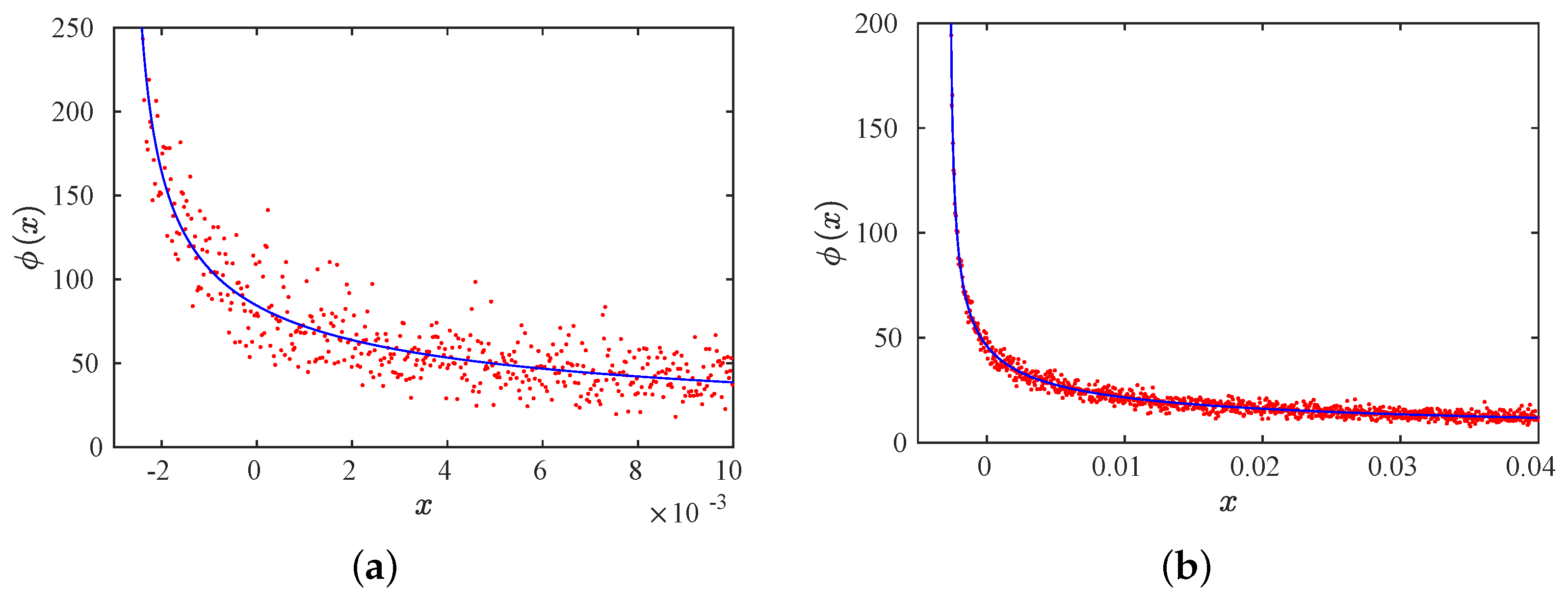
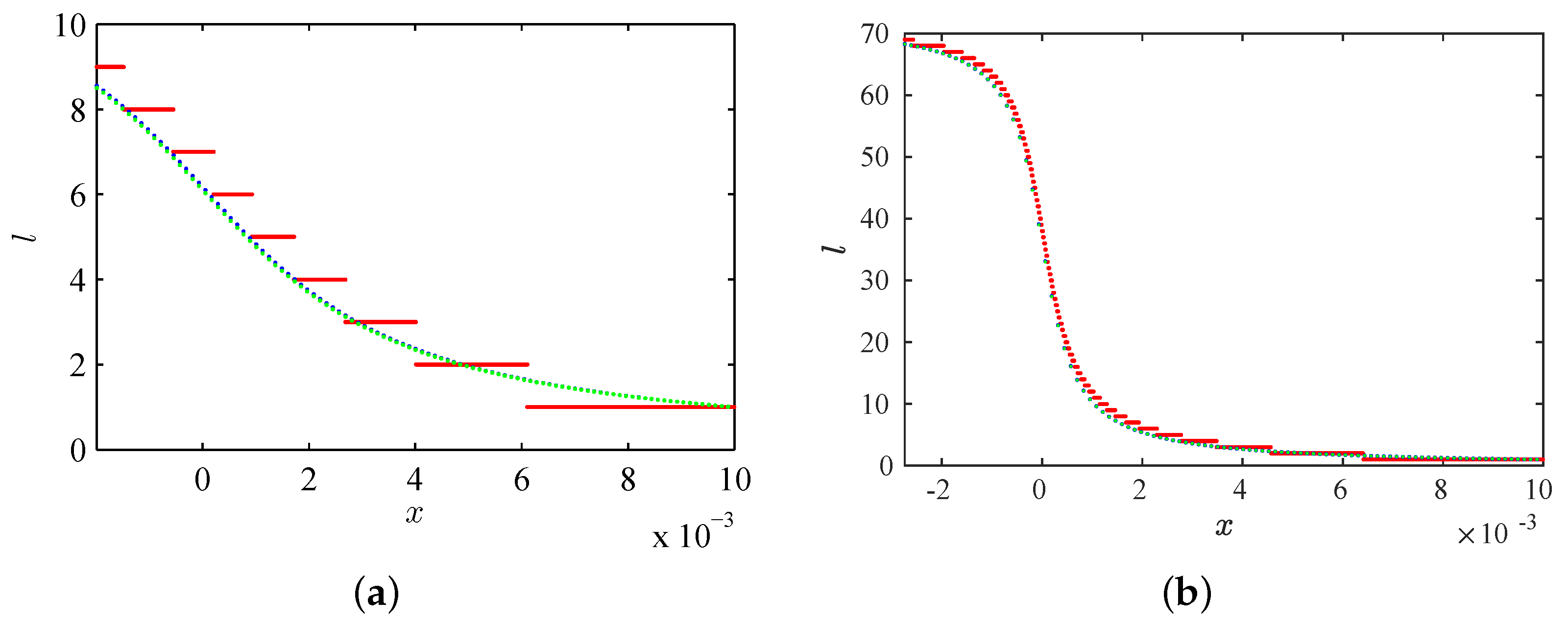

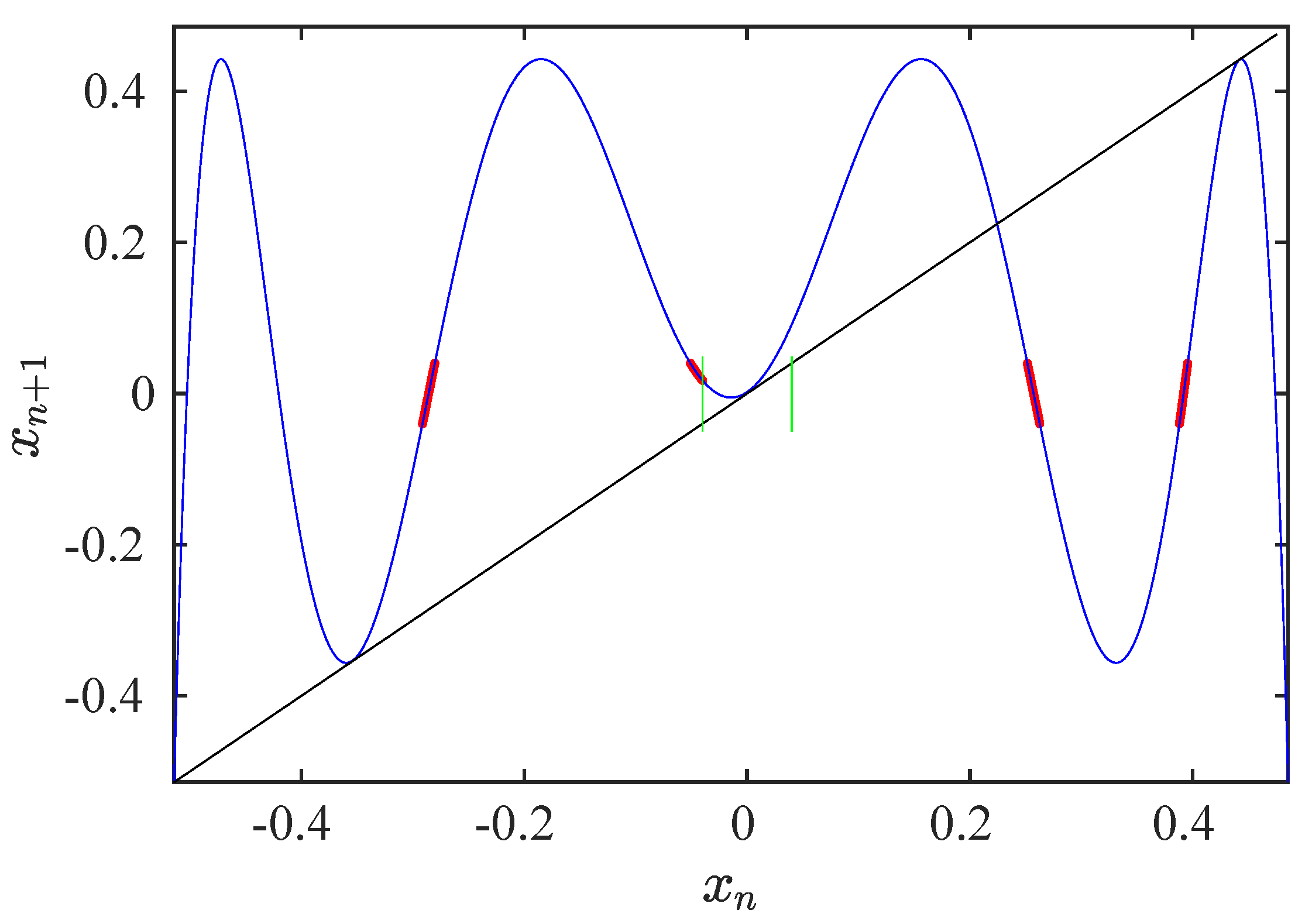
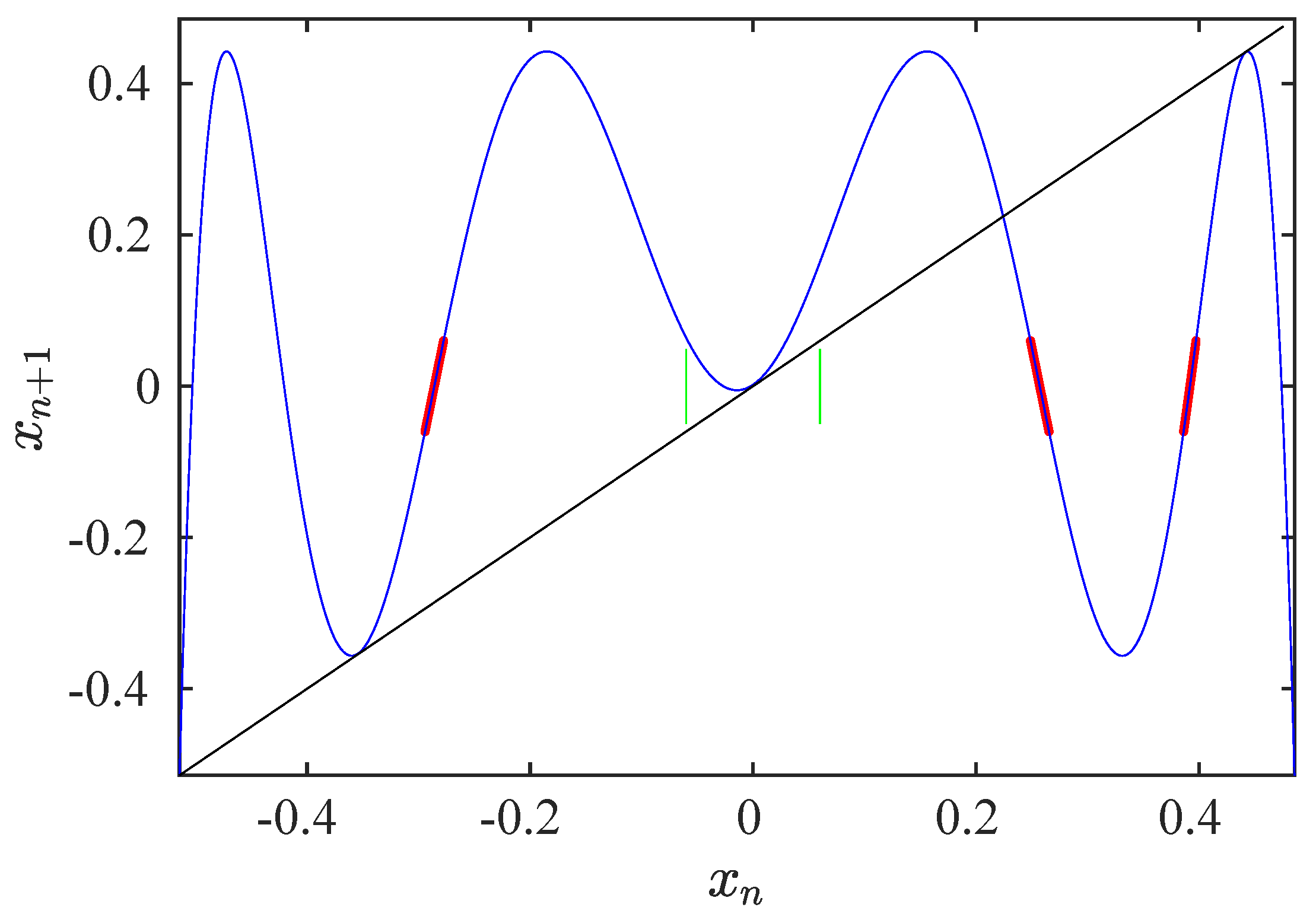
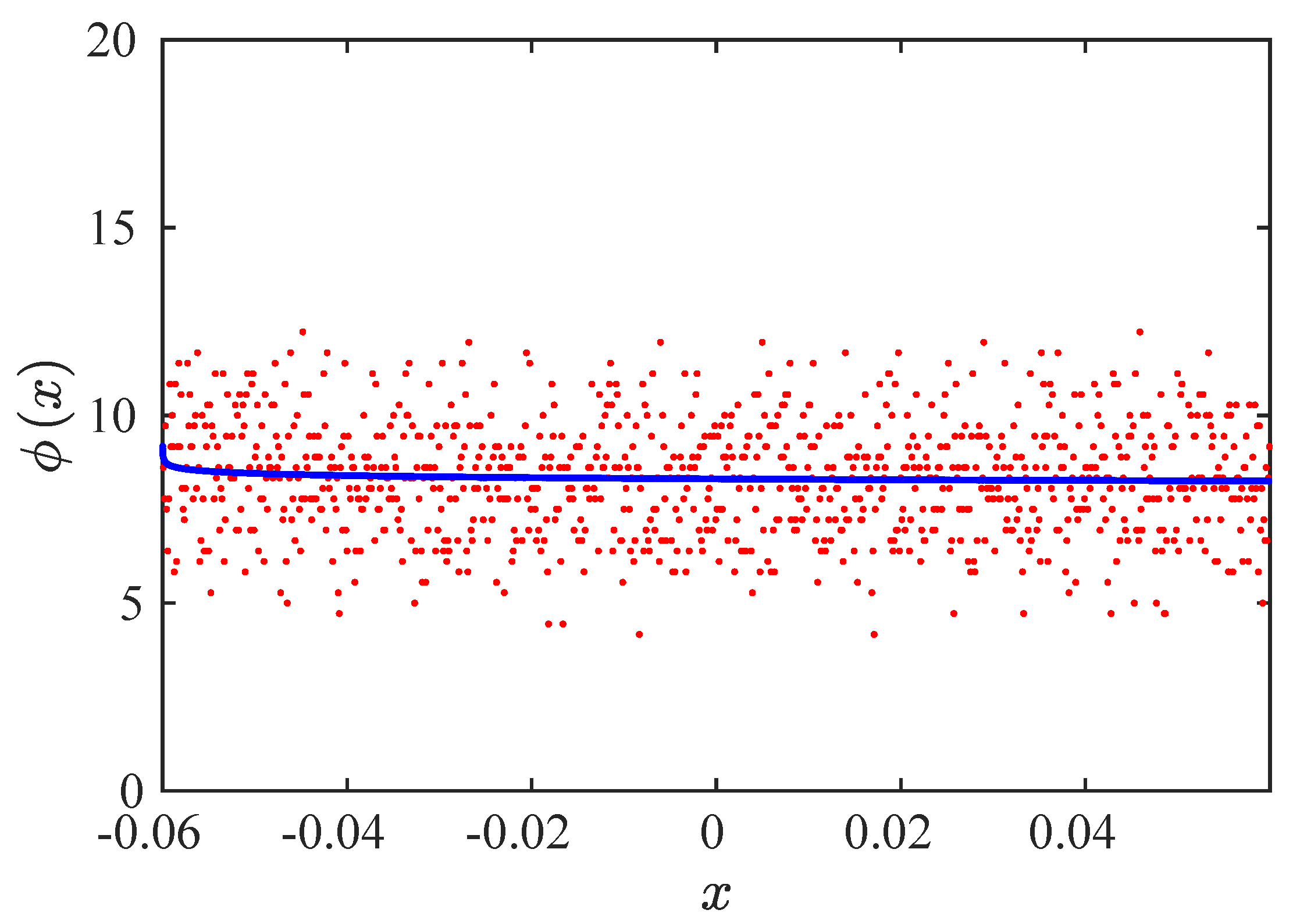
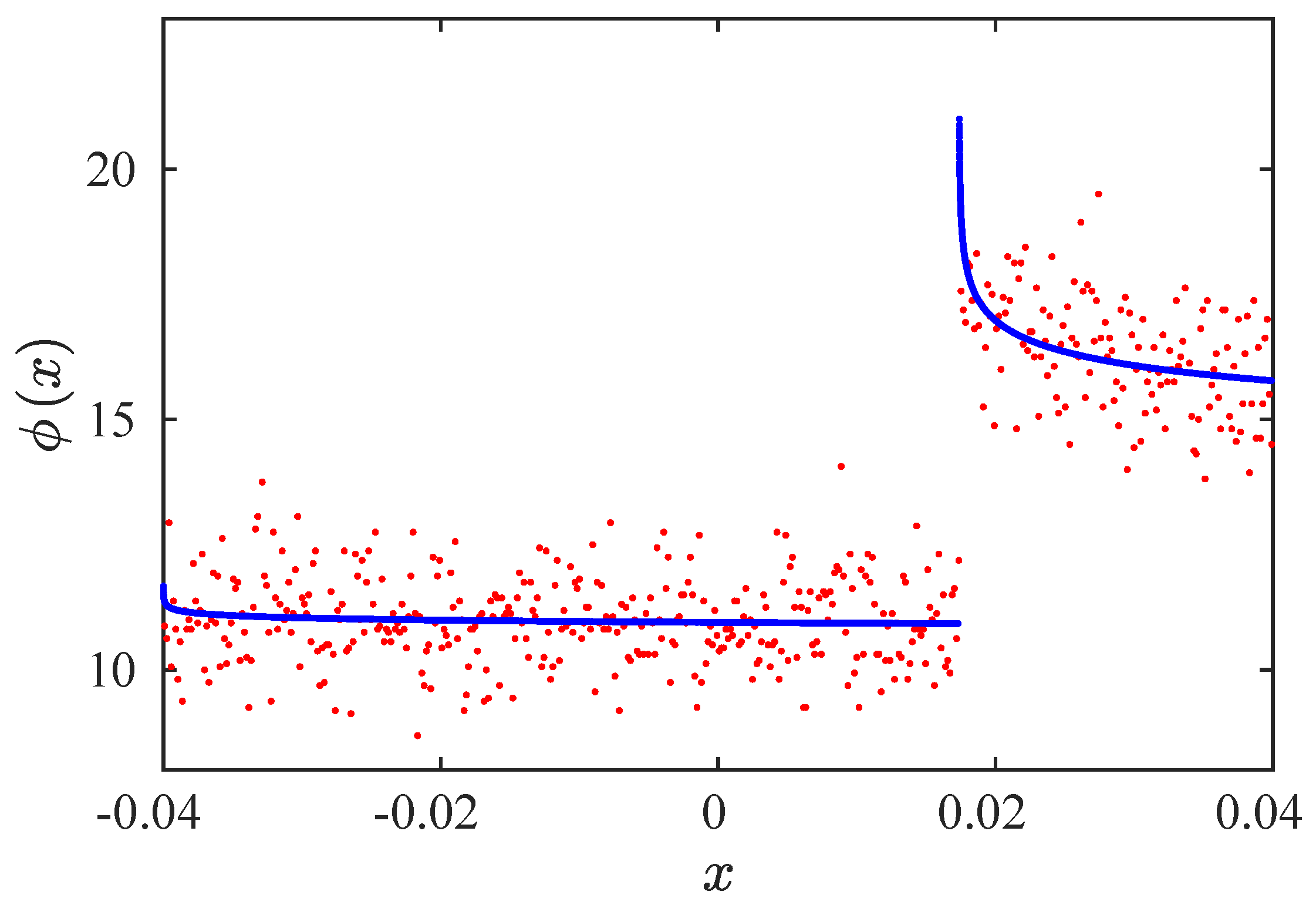
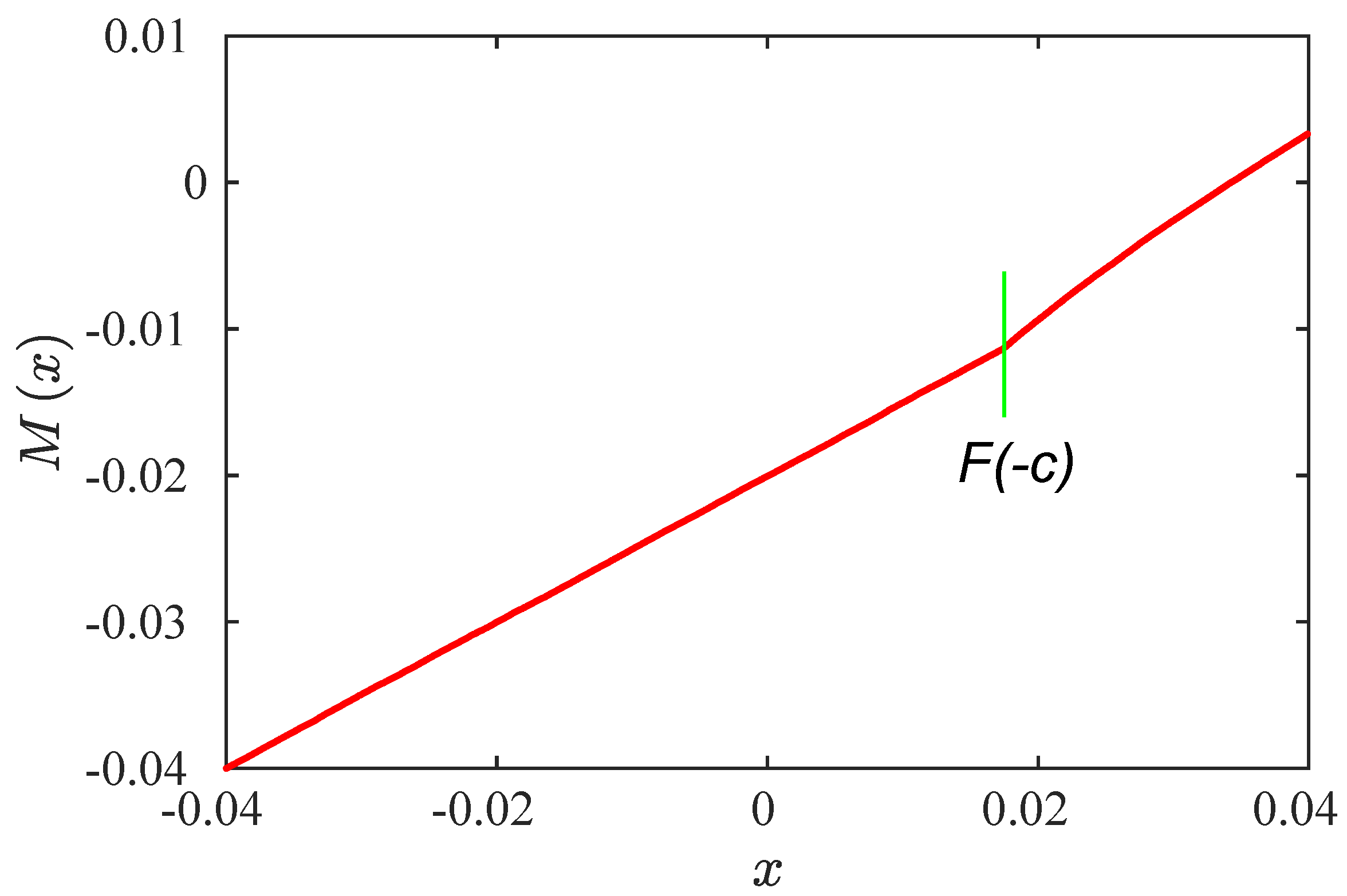
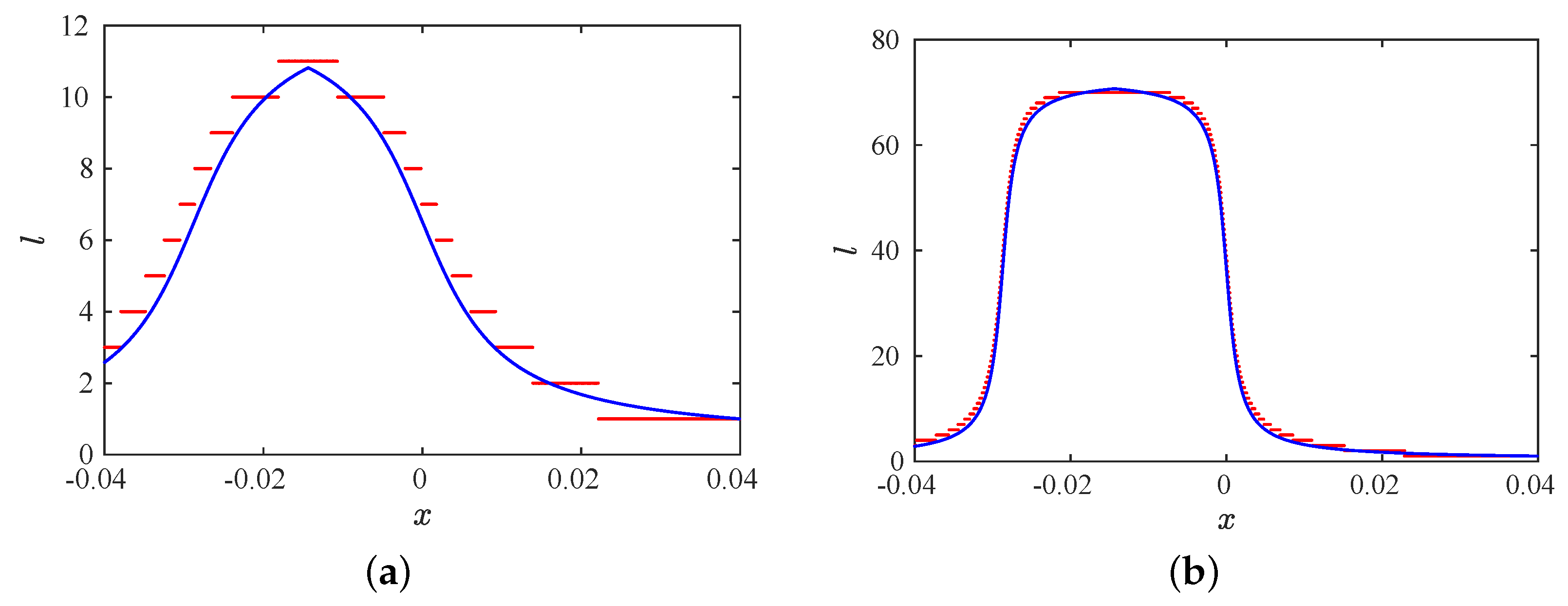



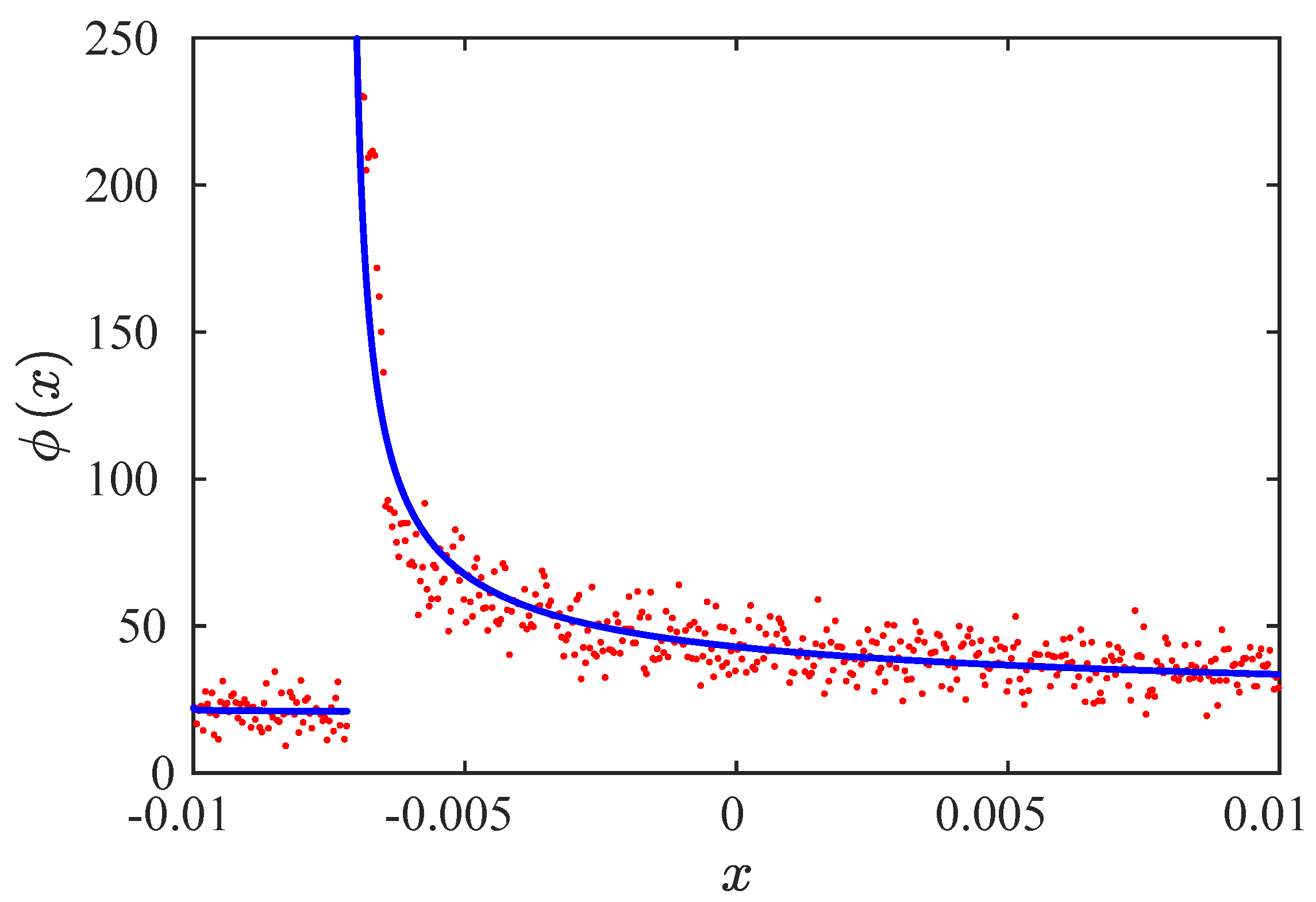
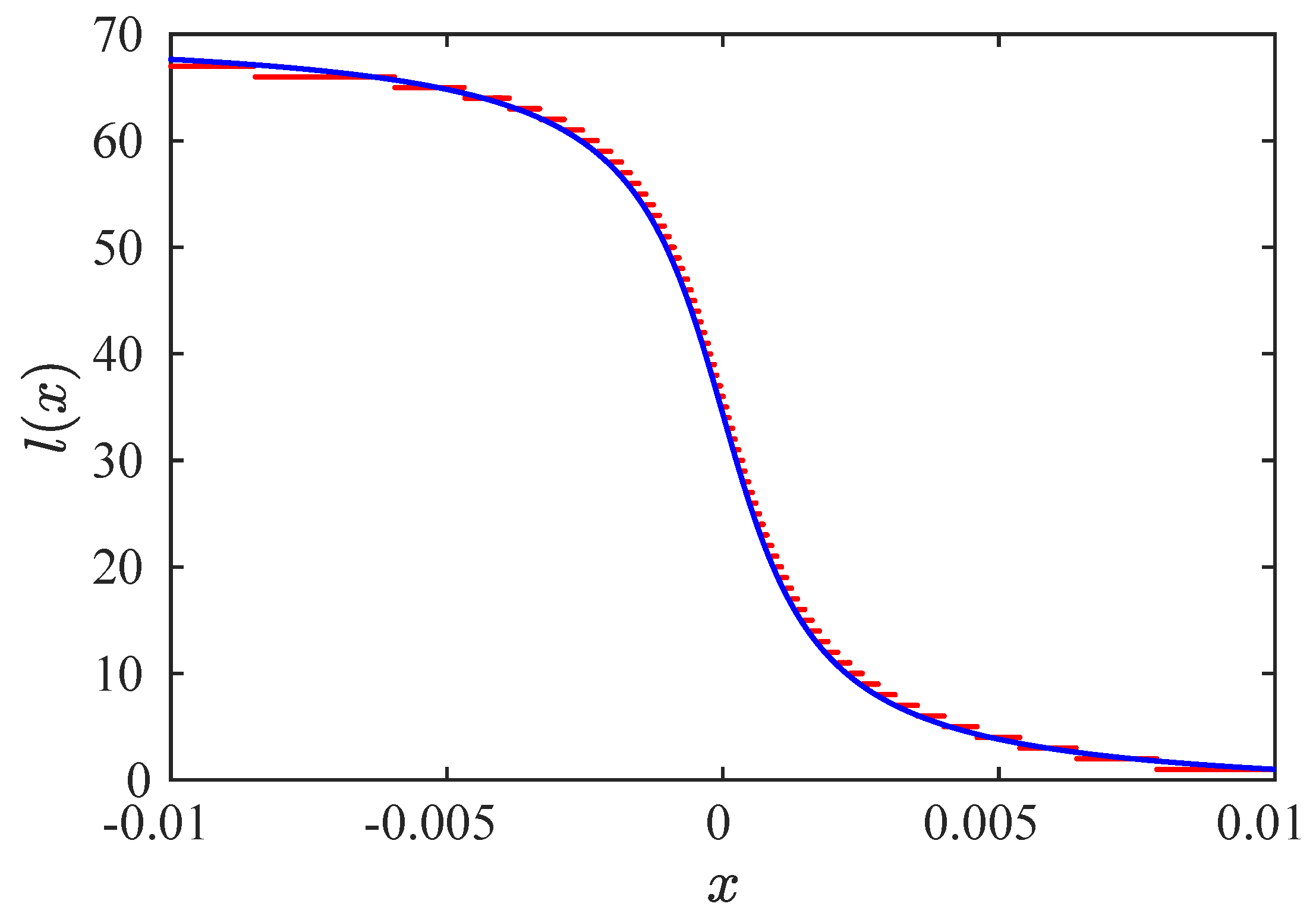
| q | a | ||
|---|---|---|---|
Publisher’s Note: MDPI stays neutral with regard to jurisdictional claims in published maps and institutional affiliations. |
© 2022 by the authors. Licensee MDPI, Basel, Switzerland. This article is an open access article distributed under the terms and conditions of the Creative Commons Attribution (CC BY) license (https://creativecommons.org/licenses/by/4.0/).
Share and Cite
Elaskar, S.; del Río, E.; Elaskar, S. Intermittency Reinjection in the Logistic Map. Symmetry 2022, 14, 481. https://doi.org/10.3390/sym14030481
Elaskar S, del Río E, Elaskar S. Intermittency Reinjection in the Logistic Map. Symmetry. 2022; 14(3):481. https://doi.org/10.3390/sym14030481
Chicago/Turabian StyleElaskar, Sergio, Ezequiel del Río, and Silvina Elaskar. 2022. "Intermittency Reinjection in the Logistic Map" Symmetry 14, no. 3: 481. https://doi.org/10.3390/sym14030481
APA StyleElaskar, S., del Río, E., & Elaskar, S. (2022). Intermittency Reinjection in the Logistic Map. Symmetry, 14(3), 481. https://doi.org/10.3390/sym14030481






